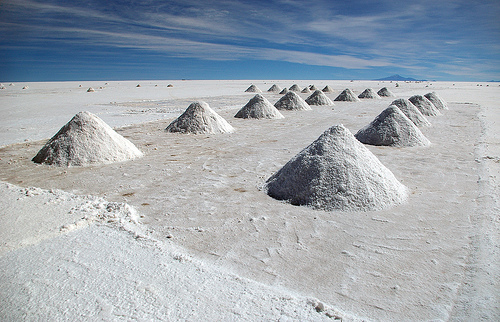Lithium Carbonate

“Lithium in Drinking Water and the Incidences of Crimes, Suicides, and Arrests Related to Drug Addictions.”
The scientific story of lithium’s role in normal development and health began unfolding in the 1970s. Studies at that time found that animals that consumed diets with minimal lithium had higher mortality rates, as well as abnormalities of reproduction and behavior.
Researchers began to ask whether low levels of lithium might correlate with poor behavioral outcomes in humans. In 1990, a study was published looking at 27 Texas counties with a variety of lithium levels in their water. The authors discovered that people whose water had the least amount of lithium had significantly greater levels of suicide, homicide and rape than the people whose water had the higher levels of lithium. The group whose water had the highest lithium level had nearly 40 percent fewer suicides than that with the lowest lithium level.
Almost 20 years later, a Japanese study that looked at 18 municipalities with more than a million inhabitants over a five-year period confirmed the earlier study’s finding: Suicide rates were inversely correlated with the lithium content in the local water supply.
Trying to make sense of their results, the authors of the Japanese study speculated that lithium exposure, even in these tiny amounts, might actually be neuroprotective or even enhance the growth of neurons. Other studies have supported their speculation; lithium appears to promote the health, growth and resilience of neurons, reducing stress-induced damage.
One study found that at the higher therapeutic doses used to treat mood disorders, brain scans of bipolar patients treated with lithium actually had increased areas of gray matter (neurons) in their brains, compared with bipolar patients who had not been on lithium and with normal controls. The authors speculated that lithium might protect the brain, perhaps promoting neuronal growth.
Lithium looks a lot like sodium. It has the same number of electrons in the outer shell—the molecule itself is a bit smaller, but the kidneys don’t seem to be able to tell the difference. And, perhaps, neither do the neurons. So the addition of a bit of lithium to the matrix will decrease the overall sodium gradient in the brain, decreasing neuroxicity, and increasing the efficiency of brain energetics.
Interestingly enough, lithium has been shown to be the only effective drug (at least to slow the progression down) in another inflammatory, progressive, and invariably fatal neurotoxic disease, ALS, which is also known as Lou Gerhig’s disease, and lithium is being studied in HIV, dementia and Alzheimer’s disease.
On the negative side, Swedish researchers tested thyroid effects of trace lithium in the water in some villages in the Peruvian Andes. Some of these villages had some 10-20 X the natural lithium in the food and water of the Japanese subjects, up to a maximum of 30 mg daily (which is, of course, within an order of magnitude of the pharmacologic dose of 300 mg). They found that lithium in the water seemed to decrease active thyroid hormone levels and increase thyroid stimulating levels—lithium as a medicine will tend to cause hypothyroidism.